Hey, guys, how you doing? It’s been a while since we’ve sat down and we’ve had a chat. And everybody is talking about AI and its future on art and photography. So why don’t we have a chat about that today? I have provided a transcript here, but I really recommend watching the video if you can.
Within the last week, it was just announced that Microsoft invested a further $10 billion into OpenAI. (they previously invested 2 billion)
What is AI Generated Art?
Now, OpenAI are the people that make Dal-e and of course, Chat GPT everyone’s talking about. Now, of course, there’s other ai art generators such as Mid Journey and Stable diffusion. And in fact, about a few months ago, maybe six months ago, I did a video on Mid Journey, kind of showing you how it works, how to use it, and then a little discussion at the end. I’ve kind of updated a lot of my thoughts since then. So having six months playing around and digesting this technology, I definitely have developed some different thoughts on it than I had back then.
Back then, I just kind of didn’t know what to think. And for those of you who don’t know about these AI engines or artificial intelligence, give them a text prompt. And based on that text prompt, it can produce art. So you could describe something, or you could describe a scenario, say it’s a cold day in Memphis and it will create art.
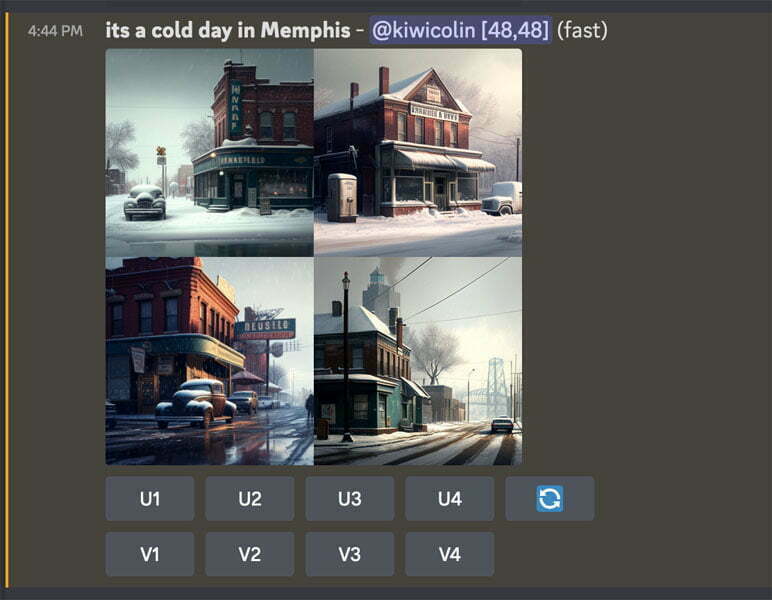
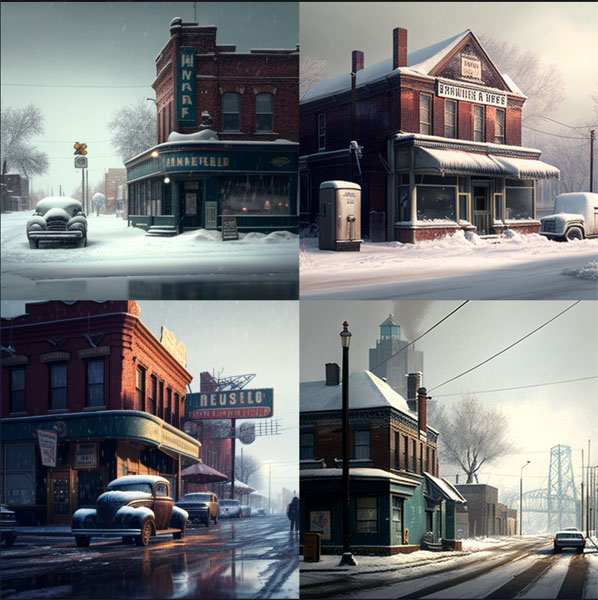
You can also direct it to create art in the style of a modern artist or DA Vinci, Giotto, or a pop artist, maybe Andy Warhol, and it will generate art in that style.
And as far as styles, it can do everything from cartoon, hand painted, photorealistic, photographic, it can look like 3D renders. And you can tell the AI all of these things and direct it. In creating art, essentially what it’s doing is you’re becoming an art director and you’re with these text prompts telling it, hey, this is what I want you to create. So we always thought with robots and technology, they’re going to do mundane tasks so we can sit around and create art and take photos. I thought one of the last things that would ever be replaced is the arts.
These are all unretouched images I generated with mid journey (Mid Journey Tutorial here)
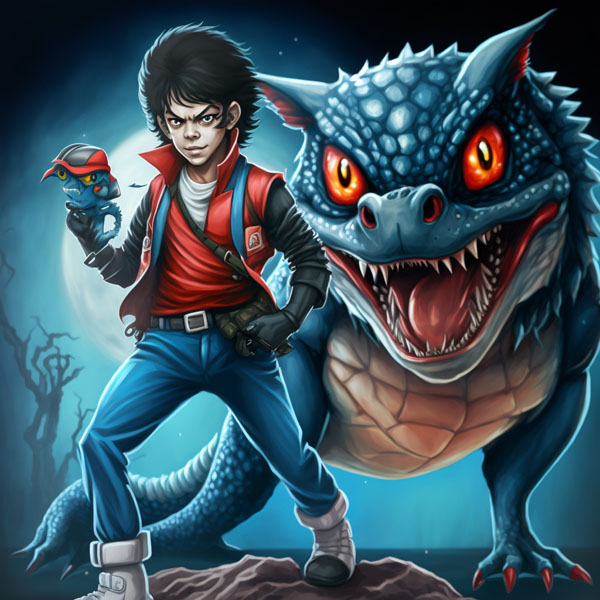
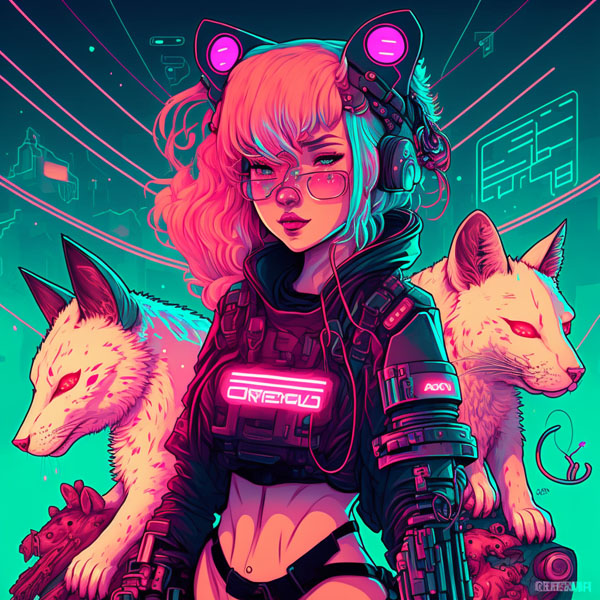
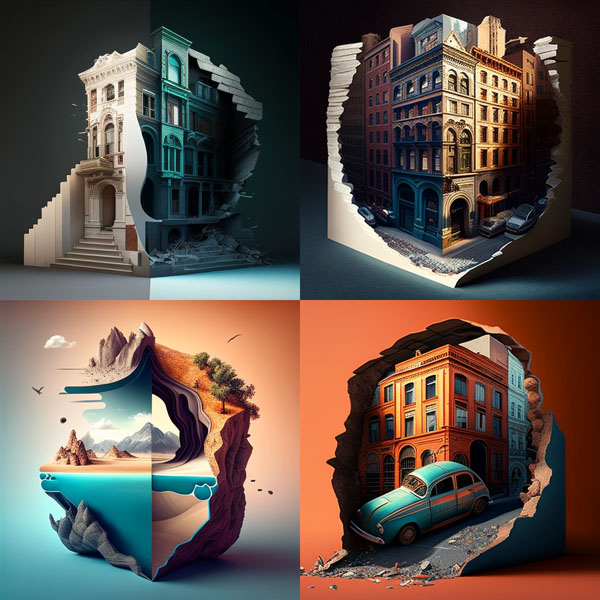
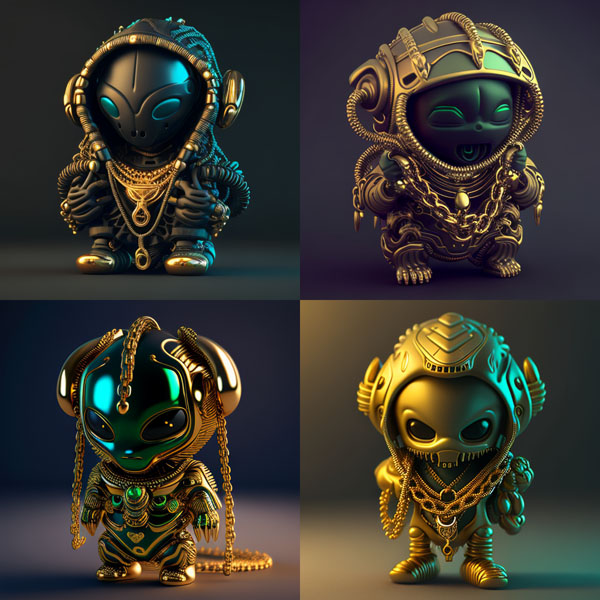
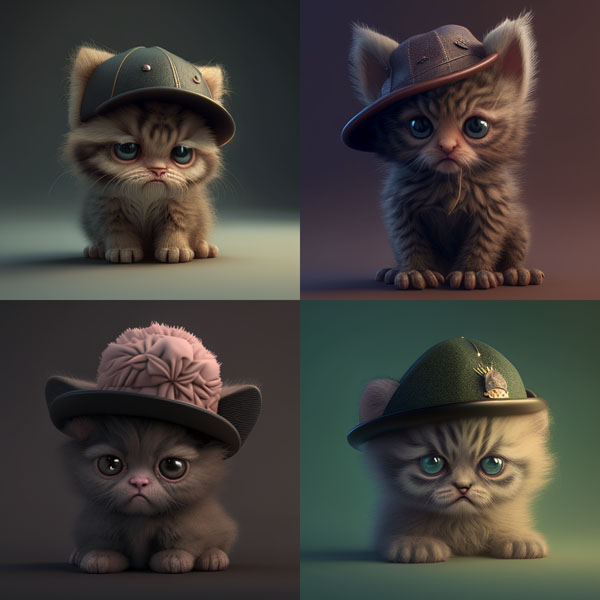
But yet here we are today, where this AI on anybody’s computer or anyone’s phone even, is able to create art as good, if not better, than most artists. So it can do visual arts, chat GTP can also do written, where you can tell, hey, write me a story. And it can write a very convincing story. In fact, just recently, I think it was a week ago, they said it just passed the exam at Wharton Business School. And of course, even in the areas of music, AI is in there, and now it’s creating songs.
But let’s focus on photography and digital art because this is kind of what our niche is here.
History of Technology and how it affects jobs

So to kind of figure out where we’re at, why don’t we take a quick stroll through human history? Initially, humans were able to start building tools and things out of stone. And this enabled us to do things that we couldn’t do before. And then of course that went on to the bronze age, the iron age.
We were able to start building different tools and inventing things and eventually this led to the industrial age. And then came the industrial age where we were able to elevate beyond just creating tools into creating machines. And these machines were able to mass produce things. They were able to bring down the cost of living and at the same time raise living standards and provide us with a lot of the things that we enjoy even till today. Now, there is good and bad to all of these, of course.
One of the good things about the industrial age, it actually doubled the life expectancy of the average person. But one of the things about the industrial age of course, is now a machine can work more efficiently than a human and requires less skill. You can kind of see where I’m going with this. So there’s a term that we use for people that are against technology and against progress and that’s a Luddite. And this actually came around the time of the power loom.
Resistance to change – Luddite
There were highly skilled textile workers that made a good living and were very good at what they did. And they had these workshops where they created textiles, which is what cloth and clothing were made out of. Along came these power looms, they started building factories and were able to produce much more textile. And because of this, the prices came down, the workshops couldn’t compete. A lot of them closed down.
The workers went to the factories to try to get work. And of course they couldn’t all get work because number one, they didn’t need as many workers because of the machines. And number two, they didn’t need such highly skilled workers because the skill needed to run these machines was much less than the skill needed to create these things by hand.
And so the legend goes that the luddites were named after a guy called Ned Ludd. Now apparently Ned Ludd never actually existed, but it was a good folklore to kind of get things motivated.
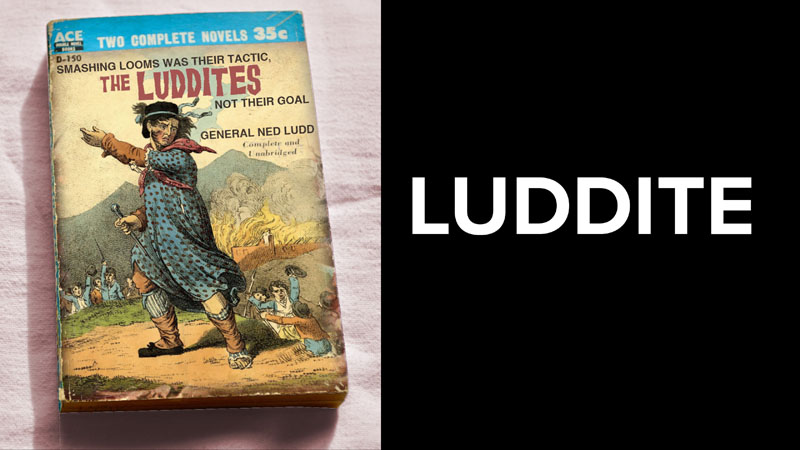
And then the Luddites actually mobilized and went around smashing machines and to the point that the British army was fighting against them. And at one time, believe it or not, there were more British soldiers fighting against the Luddites than were fighting Napoleon at the time. So eventually they were suppressed and everything just kind of moved on.
We go from the industrial age, (through the atomic age, first space age) then we moved into the information age where computers come along. Now remember, computers also replaced a lot of jobs.
So during this time, there was a lot of people that were doing things that were very labor intensive, that were now being automated. Even like today, things are being automated and replaced by machines. Machines are much more efficient they’re cheaper to run. They produce more. They don’t need to be fed, they don’t need sleep. They can’t go on strike. There’s a lot of reasons that it’s more efficient to use machines. Now. As more machines come along, less people have work in those areas.
So let’s go back a little bit, and then we’ll move forward.
Movable type was invented, which is the printing press. And before that, scribes that used to write. That’s how they made their living, by writing these books. All the books were created by hand. Monks and scribes wrote all these books by hand. That was their job. So then the printing press replaced them.
But look at the new opportunities that came out of that. So out of the printing press came people working in printing press. There were printers now. There were newspapers and bookstores. That’s kind of interesting. And so a lot of people were working in the print industry, and that created jobs. Now, of course, a lot of that is starting to diminish now, and it’s being replaced by digital and online. But think about that.
Now we have a whole IT industry. We have whole new jobs. I think about what I do as a digital artist. I wouldn’t have my job if it wasn’t for computers.
One of the interesting things about the industrial age is this brought about these massive cities that started to build, because now people were coming together because it was possible because of this technology, and also they were coming together to work and build things.
Where we are now? We’re in a different place, where now that’s being democratized, and we’ve already seen this happening. This is not new as far as outsourcing. Now everybody in the world competes for the same job. So it’s not necessarily someone next door that’s competing for your position in IT. It could be someone in India, it could be someone in Ireland, it could be somebody in New York. They could be anywhere.
That’s changed things, where literally now, because of the Internet, we can live and we can work anywhere. There’s less jobs in this particular area, but new jobs have opened up, and also new opportunities have opened up. All right, but where does that go for us as artists? Let’s look at photographers for a second. Okay, so I actually started photography when we were using film.
I was predominantly a graphic designer for a living, but I was making part of my living, part of my job was doing photography. And I would go to events, and I would take my camera and I would load my film. And I had a very specific skill set. See, here’s the thing. I couldn’t look on the back of my camera and see, like, all my exposure, everything’s, right? No, I had to learn the craft. I had to know the settings on the camera. I had to understand what was going to work and what wasn’t going to work, where I could hire myself out for a job. Because you can’t go and shoot a major event and then go to develop the pictures and none of the pictures came out. That’s not a good way to make a living.
A lot of photographers will nod and say, yes, wedding photographers will understand that. So there was definitely a skill set required to take photographs. Then along came the digital camera. Has that changed photography?
Absolutely.
We go to every event and someone’s got a digital camera, everyone’s got a digital camera, everyone’s got a phone. Yes, but now that everyone’s taking photographs with phones, is that taking away the art or is it making the artist obsolete? I don’t think so. I think the fine art photographer is still going to have a place, because that level of expertise and that level of skill to create that piece is beyond what the average person has with their phone. Not just that, but a lot of the photographs are throw away photos, like when I go to a hotel, I take photos of my room number so I know what room I’m in. I take photos of the menu at a restaurant so I can just look at it on my phone. It’s much more convenient. So the camera has become a tool, which is more than just art or documentation. But let’s look at this professionally, maybe as a working artist, graphic designer, illustrator.
People that used to do illustration were replaced by a camera. Does that mean illustrators are gone? Let’s go all the way back. Does that mean stone workers are gone? No, there’s still people working with stone (usually the last possession anyone has), there’s still people working with steel, there’s still people creating handcrafted goods.
So as designers, we’ve been using props for a while. For example, stock photography. There was stock photography, which was rights managed, licensed before we got into royalty free. And having licensed stock photography as part of my job, I can tell you there’s many times where it has been more cost effective to have just gone photograph it myself or sent a photographer out than it would have been to use the stock photography. Of course, now with royalty free (and micro stock), it’s become very cheap.
Now, that doesn’t mean that stock photographers don’t have a job anymore. And notice I’m going back there. I’m talking about stone workers, steel workers, photographers. They still work. I’m going somewhere with this.
And this will apply to Photoshop and what we’re doing in a second. While we’re working, we can use stock photography, but then there’s other things. We’ve been using overlay assets, templates. So we’ve been using these things to aid us in our work, and it hasn’t put us out of work. And in fact, the design digital art industry is probably bigger than it’s ever been because of the advent of new technology, because now a lot of things are going from print to digital to online. We’re looking at things like iPads, phones, we’re looking at websites, we’re looking at apps, we’re looking at ads, social media. So now there’s more demand than ever to create these digital assets.
Is the Digital artist doomed?
All right, let’s bring all of this in for a landing and wrap all of this up where it all kind of comes together and makes sense. This is what I think. So if we look at AI art that is able to generate what people need, will it replace the digital artist, the photoshopper, the photographer?
And I say, no, I don’t think it is. When I first started using it, I was like, oh, my gosh, this is ridiculous. This can do this. Why do I even need to learn this craft? Well, there’s some limitations that I’ve kind of noticed. And yes, it’s getting better. Mid journey, couldn’t do eyes before. Now it can do eyes perfectly. Now it can’t count. If you look at hands, teeth, toes, you’ll very often get ten fingers on one hand or 100 teeth in a mouth.
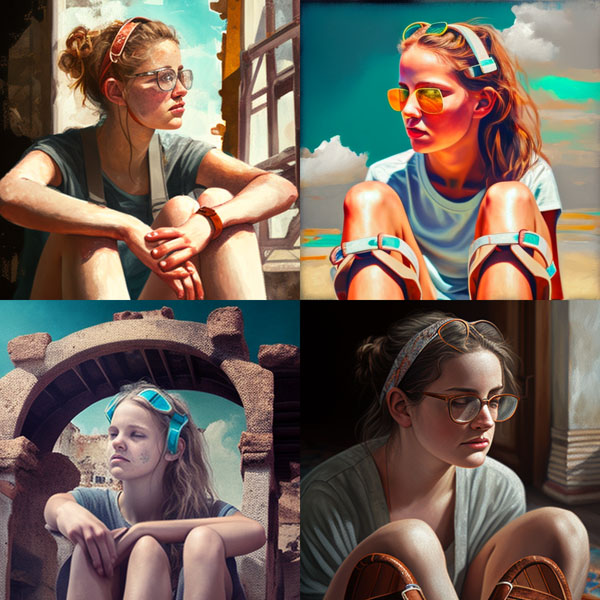
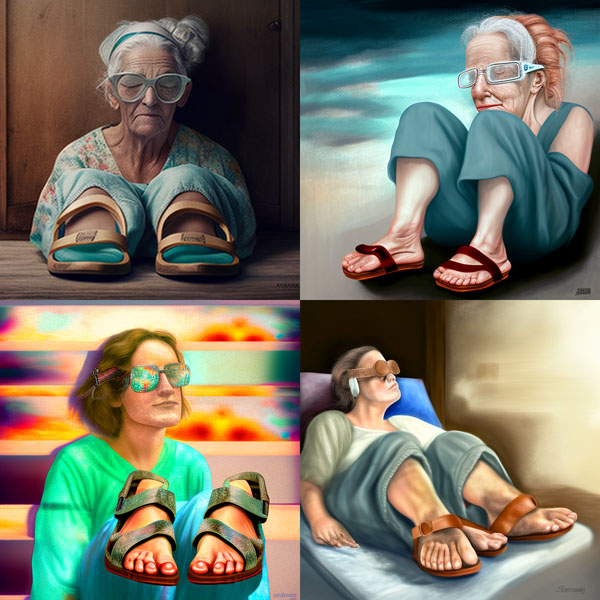
Ai art is Improving, but how fast?
So there’s definitely some areas where it has to improve, and it will get better. Now, here’s the thing. It’s not going to get perfect overnight, because there’s that whole principle of, you know, 80/20, that last 20% is going to take way more time and way more computational power than the initial 80%. If you learn a musical instrument, you’re going to learn some chords and stuff on a guitar.
You can learn some chords very, very quickly, and you can make progress very quickly. But the further you go and the better you get, the more difficult it is to make more noticeable progress. So one of the things I found is that AI is capable of generating some incredible things, but it cannot generate what I see in my mind. If I have a picture or a vision in my mind, maybe I can draw it. Or I can find someone to draw it (a job), and then I can feed it into the AI, and that will actually get a lot closer to what I’m looking for.
Now, if it’s not perfect, you can’t tell mid journey, “hey”, “rotate that person 45 degrees and put a blue hat on them instead of a yellow hat.”
It can’t do that right now. So this is where the Photoshop skills come into play. You can take that AI piece, maybe as a plate or as a starting place, and then you can composite over the top of it. You can move things around. You can change the color. You can change the hand into only five fingers. Now, these things still require skill, so there’s always going to be skill. But you’re applying your skill in a different place. There will be retouchers in the future who’s job is to retouch AI. Now there’s a position that didn’t exist. There were retouches that did commercial retouches of people cars, shoes, whatever. But now we’re going to be doing retouching on AI. We’re going to be using AI to generate ideas. And we might use those ideas as a basis for doing a photo shoot or for creating another piece of work.
How to secure your future
So AI is going to reduce the amount of digital artists that are needed. That’s a fact. Am I excited about that? No. Can I change it? No. So what do I say to you?
I say to you, get as good as you can. Start learning the AI. Learn how to apply it, use Photoshop with it, use it with photography, use it for backdrops, for photography, use it for different things. Start to understand it, start to learn how to use the prompts. And you’re more likely to be one of the people that’s going to be hired in the future to create and make things.
What about the Hobbyist?
So what about the hobbyist? Well, as a hobbyist, it shouldn’t change anything if you’re doing something because you enjoy doing it. It doesn’t matter if a machine is doing it or if other people are doing it too.
It doesn’t matter how well it pays or it doesn’t. If just for this sheer joy of doing it, you should still do it. If you enjoy photography, do photography. If you enjoy design, compositing, enjoy design and Compositing. Maybe use AI to help you with your compositing, to create some of the elements so you’re not searching for stock photography for hours and hours.
You can generate some of those elements in AI, cut them out, drop them in and put them together inside of Photoshop. And at the other side of things, there’s going to be new opportunities, new positions created.
There’s going to be prompt, artists. People’s job is going to be to work with this AI and feed it with the right prompts to create what we want, to create different iterations. And there’s other jobs I can’t even think of right now, but with each one of these major steps forward in humanity because when I talk about AI, we’re not just talking about art, we’re talking about robots, we’re talking about self driving cars, self driving lawn mowers.
All of these things are real and they’ll be more and more ubiquitous in life as we go forward. The AI age is upon us. It’s going to cause a lot of changes. It might change the way we live. Just like the Bronze Age, the Stone Age, the industrial, the machine, the atomic, all these different ages have changed the way we look at the world, the way we live, where we live, all these things.
It’s the future and it’s coming at us very, very quickly. And so my advice is don’t fight the future. Embrace it. It is coming anyway. So learn how you can use it to improve your lifestyle.
Because one of the things, through each of these ages, the standard of living and the life expectancy of humans has gone up. Rather than look at this from a dystopian point of view where this is it. We’re doomed. This is the end. I prefer to be optimistic about it and look at how this can enhance our lifestyles. The new opportunities, new jobs that we never even thought of are coming. We’re able to live in ways we’re going to enjoy things that we weren’t able to enjoy. We’re going to spend less time doing menial things, more time doing the things we want. And so, okay, here’s my prediction. What is going to be valuable in the future?
The future value of art?
I believe that handcrafted goods are going to be valuable in the future. If we look at the young people right now, digital natives, people born within the last 20 years, they always had digital with them. They always listening to music on ipods, never listening to records, never having cassette tapes. And trust me, if you’ve had cassette tapes, they’re not that good. But yet the kids today are craving them because they want something tactile.
They want to have an experience. So saying, “hey Siri/Alexa/Google, Play this song.” It’ll just play that song, and if I want to hear it again, I’ll play it again. But there’s an experience in putting a cassette tape, be it good or bad. You remember we had hold it half down. I’d be like and you hear the gap up, and you’re like, okay, there’s the beginning of the song, and then you’ll hear the song again. To get to the beginning of the song, you know what I’m talking about.
If you’ve used the cassette tape. And then, of course, it gets in the heads. They get dirty. It gets all chewed up. Then you get the pencil out, and then you turn it on the cassette, and then you put the tape on it, where it gets cut or it gets chewed, and then you’re listening to your favorite song, and then there’s this sound in the middle, because where it got chewed, right? And it sounds warbly or whatever, or the record gets a scratch. So they’re not perfect. But yet people are craving that experience. It’s something real.
Even now with photography, because digital cameras that take perfect photos, so young people are craving things like lomo, holga cameras, things that have floors. Wabasabi. Wabasabi is looking at the beauty in the imperfection. Wabasabi is your favorite pair of old jeans. There’s something special about them.
And so with handcrafted goods. In the future, as we get more 3D printing and doing all the things with technology and everything moving forward, people are going to crave that hand crafted good, that pot, that’s not quite round, that painting, that’s not quite perfect. That photograph, that oh, it’s got a little bit of noise. There’s some shadow over there. These things are going to be what make people fall in love with handcrafted goods when we’re living in a world of artificial perfection.
People are going to be craving for the imperfection, for the imperfect which is us humans, humanity. We are not perfect. We don’t do anything perfectly. Everything is different. Handcrafted, whatever it is, things that are handmade, I believe, are going to have extreme value in the future. So I’m curious to know your thoughts. Let’s open the discussion. And two things I ask. Number one, be civil. And number two, respect other people’s viewpoints and emotions. Because we’re all at different places with this. As we’re changing and growing, it it’s not comfortable. I’m not going to say it’s wonderful and this is so great and so comfortable. No, it’s uncomfortable. It’s a time of change.
It’s a time of transition. Things are changing. Let’s come together and support each other. And together we can forge the new way forward where we can create more beautiful things than I’ve ever been created.
Thanks
Colin
The post Will artists be replaced by AI Art? Mid Journey and Chat GPT. What I think appeared first on PhotoshopCAFE.
![[DEV]Schenectady Photographic Society](https://dev.spsphoto.org/wp-content/uploads/2020/03/newsitelogo5-e1584673483198.png)